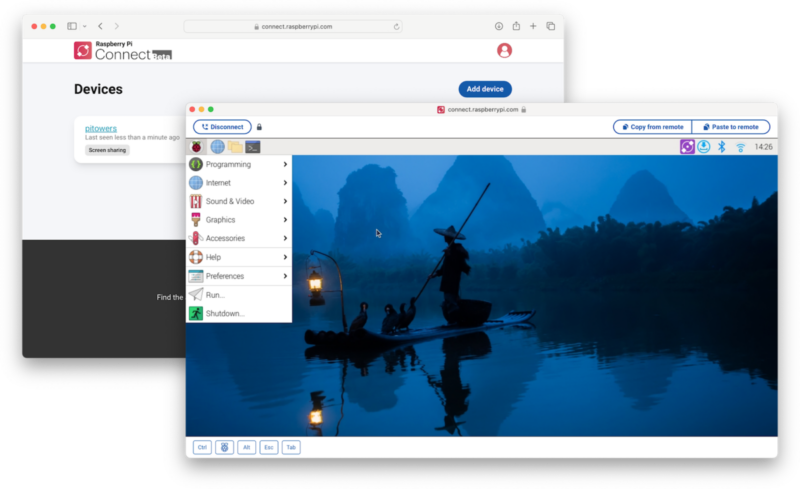Raspberry Pi Connect —
Reach your little Pis from nearly any browser—and free up your RealVNC slots.

Enlarge / Raspberry Pi Connect looks like a good reason to make a Pi account, at least if you’re not running your own DynDNS, VPN, and other remote-access schemes.
Raspberry Pi
One Raspberry Pi often leads to another. Soon enough, you’re running out of spots in your free RealVNC account for your tiny boards and “real” computers. Even if you go the hardened route of SSH or an X connection, you have to keep track of where they all are. All of this is not the easiest thing to tackle if you’re new to single-board computers or just eager to get started.
Enter Raspberry Pi Connect, a new built-in way to access a Raspberry Pi from nearly anywhere you can open a browser, whether to control yourself or provide remote assistance. On a Raspberry Pi 4, 5, or Pi 400 kit, you install Pi connect with a single terminal line, reboot the Pi, and then click a new tray icon to connect the Pi to a Raspberry Pi ID (and then enable two-factor authentication, of course).
From then on, visiting connect.raspberrypi.com gives you an encrypted connection to your desktop. It’s a direct connection if possible, and if not, it runs through relay servers in London, encrypting it with DTLS and keeping only the metadata needed for the service to work. The Pi will show a notification in its tray that somebody has connected, and you can manage screen sharing from there. The Pi’s docs site has a lot more on the particulars.
Connect works only on 64-bit systems running the Bookworm version of Pi OS with a Wayland window server. Connect was created partly due to Pi’s transition to Wayland from X, which offered its own remote desktop option. According to the Pi firm, the service runs on a peer-to-peer WebRTC connection, similar to that of Zoom, Slack, Teams, and other video-sharing services. The whole service is in beta at the moment, and the company says it’s not quite sure how much traffic to expect through its relay servers.
Listing image by Getty Images